CRATERS OF THE MOON (Day 2 - part 4)
Next to these two Spatter Cones was another spatter cone with the name of Snow Cone. Its crater is so small, narrow and deep, that snow often resides in it year-round.

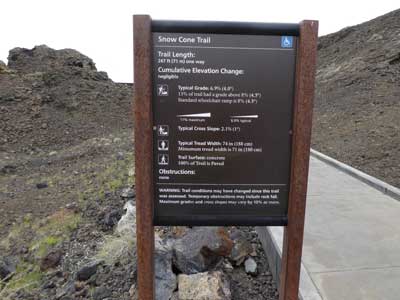
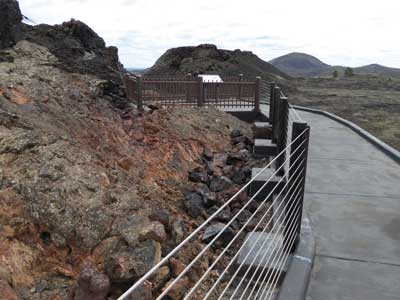

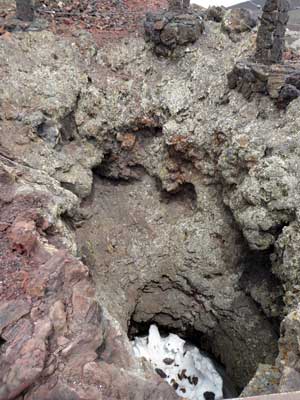

Yup! Snow!

A view of the nearby Spatter Cones
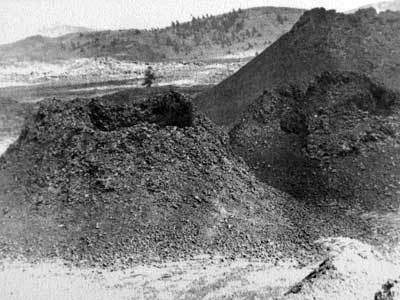

Pristine cones in the 1920s ... and then in the 1980s after the establishment of trails. Unrestricted access in the 1960s had caused extensive damage.

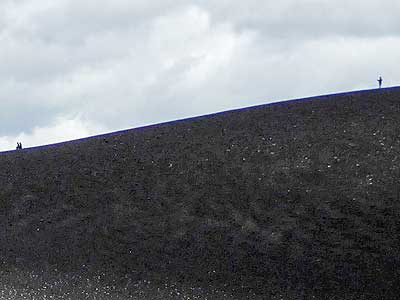
Back in the parking lot, looking up at Inferno Cone
The Tree Molds Trail was slightly longer, a mile out and then back. When molten lava advanced through this area, it flowed through a grove of living trees. As the trees burned, moisture was released as steam. This cooled the lava just enough to leave an impression of the charred wood on the surface. The trees also left holes. The cooling lava coated their exterior, creating a solid crust around the trunk while the tree inside burned away, resulting in a cavity. In many cases, mold formation requires slow moving lava, as well as enough time for the mold to cool.


Lava fields on the way to the trailhead


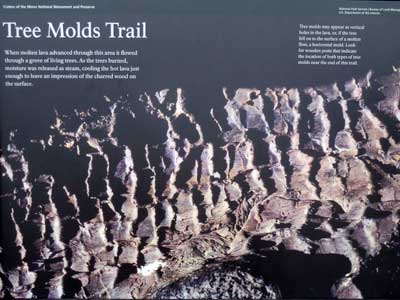
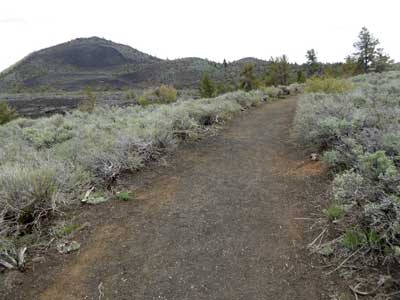

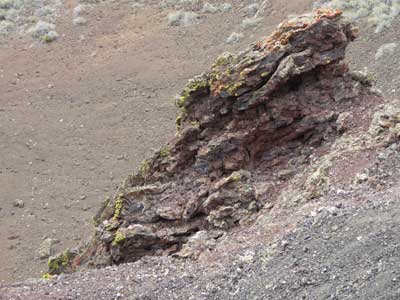
A large crater

This is an extremely difficult area for plants and animals ... dry winds, heat-absorbing black lava, summer soil temperatures reaching above 150 degrees F, a semi-arid climate. Water is usually only found deep inside holes at the bottom of craters. There are 375 species of plants in the monument. Larger ones are pine trees, cedars, junipers and sagebrush.




(right photo) Reaching the edge of a massive lava field



Thank goodness for the sign or I easily would have missed it!

We weren't exactly sure what was just lava and what was former trees. So we just guessed at anything that looked even remotely tree-like.








Heading back, with the edge of the lava flow on our left and interesting lava rocks on our right

A rock that has been cracked open reveals its red interior.


We suddenly started noticing a lot of blue rocks. As it turns out, this was part of the Blue Dragon lava flow. The color is found at the edge of the flow, where we were. The flow edge interacted chemically with the atmosphere, adding a tiny bit of oxygen which allowed for the growth of magnetite crystals, with iron and titanium... or elements with different charges. When light strikes those elements, it drives electrons from one to the other, which causes some types of light to be strongly absorbed and others to be reflected, resulting in strong colors ... in this case blue from the titanium magnetite crystals.


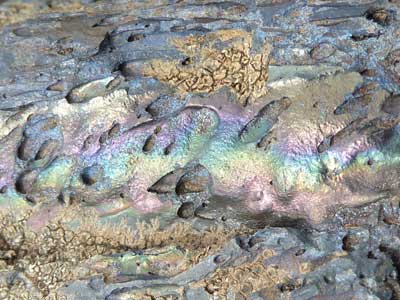
Rainbow colors and funky shapes


Life finds a way

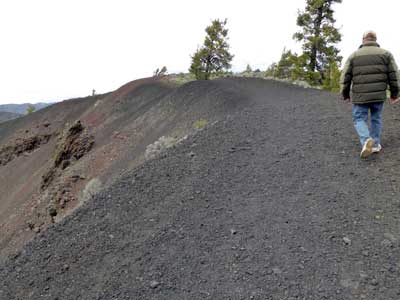
We still had a 3-hour drive to Caldwell, so we made our way back out of the monument.


return • continue

